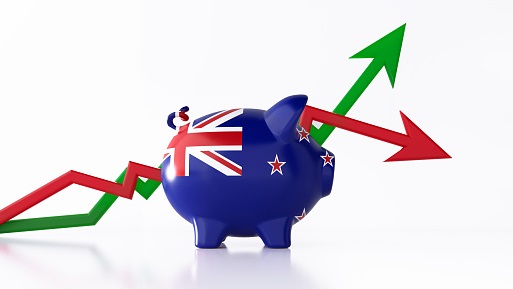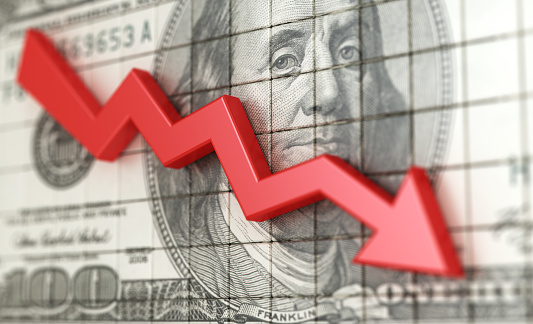During the coming Wednesday’s Asia Pacific session, we are overwhelmingly likely to witness the first-rate hike from a G10 central bank since the onset of the pandemic in early 2020 from the RBNZ; money markets currently price in a 25bps from the RBNZ next Wednesday with near certainty, as well as one more 25bps rate hike by the year’s end and a further 50bps in hikes by mid-2022. At its last monetary policy meeting, the RBNZ abruptly axed its QE programme and signalled that the time was soon coming to move away from its ultra-accommodative stance.
Why is the RBNZ starting to hike?
Following a double dip recession in 2020, the New Zealand economy is going guns blazing in 2021 and has thus far outperformed even the most bullish of economist’s forecasts. The unemployment rate in the country dropped to an average of 4.0% in Q2, meaning the labour market has already returned to pre-pandemic levels and at levels which many see as close to full employment. Inflation, meanwhile, is already above the RBNZ’s 1.0% – 3.0% target range and is expected to persist significantly above this range for some time. The bank’s policy mandate is to maintain inflation as close as possible to the 2.0% midpoint of its 1.0% – 3.0% range and to support maximum sustainable employment. With the economy overshooting the bank’s inflation goal and seemingly pretty much back to full employment, there isn’t much economic rationale for keeping interest rates at record lows.
Another key reason for the bank to hike interest rates is to cool off what has been a historic run higher in house prices in the country over the past two years. The latest July house price data showed prices to have risen 25% YoY. Record low interest rates have stoked hug demand for housing. Efforts by the RBNZ, who took measures such as tightening loan-to-value (LVR) restrictions in an effort to dampen mortgage issuance, and by the government, who have taken steps to prevent speculative house buying, have by and large failed. This is a big thorn in the side of the ruling New Zealand Labour Party, who had promised to improve housing affordability. Earlier in the year, the NZ government instructed the RBNZ to assess the effects of its monetary policy decisions on this objective. In the end, the RBNZ has not made any major changes to its mandate, defining sustainable house prices back in its May monetary policy statement as not being in bubble territory.
Arguably, the NZ housing market is in bubble territory and this, combined with strength of the broader economy, justify the bank continuing to reign in the extra-ordinary policy measures implemented in response to the pandemic. As noted, QE has already been axed so the next step is to begin raising interest rates back towards “neutral”, or a level that neither stimulates demand and inflation nor inhibits it. Failure to do so could increase financial stability risks (a further run up in house prices and then maybe a crash) as well as risking overheating the economy (meaning inflation remaining above the bank’s target range for significantly longer than the RBNZ is comfortable with.
What this means for NZD?
ING think that, given the fact that markets already fully expect a 25bps rate hike from the bank next week, NZD traders should instead focus on the kind of forward guidance the bank gives with regards to future rate hikes. The key question here is whether the bank signals that there will be more or less interest rate increases that the total 100bps in rate hikes expected by mid-2022. More hawkish guidance from the RBNZ than markets currently price will of course be an immediate bullish catalyst for NZD and vice versa.
Beyond next week’s rate decision things are a little more complicated. Asia Pacific sentiment has been soft in recent weeks, with stocks in the region plummeting amid 1) concerns about the spread of the highly infectious delta-variant in key regional economies (like Thailand, Indonesia, Malaysia, Australia and now also China), which is expected to weigh on the region’s (and thus New Zealand’s) economic growth in the near-term and 2) a broad slowdown in the pace of Chinese economic growth following the rapid deceleration in the country’s credit impulse and amid ongoing regulatory crackdowns, meaning softer demand from one of New Zealand’s key export destinations. If the above factors continue to weigh on sentiment in the broader Asia Pacific region in the coming weeks/months, this will also weigh on the kiwi. FX strategists suspect that with RBNZ rate hikes improving the carry appeal of holding NZD’s, the currency should continue to outperform the likes of AUD and other risk sensitive G10 currencies whose central banks’ are behind the RBNZ in terms of monetary policy normalisation.
As far as NZDUSD is concerned, the direction of the US dollar will also be a key factor. NZDUSD has been stuck within a 0.6900-0.7100 range over the past two months. Over this time period, the kiwi has modestly outperformed most of its other G10 counterparts given the hawkish turn from the RBNZ. But the DXY (the broader index of dollar strength) has been stuck within a 92.00-93.00 range as markets await the next move from the FOMC. Policy makers at the US central bank have been becoming incrementally more hawkish in recent weeks, with most now pushing for the bank to start tapering its QE programme by the end of the year.
Many suspect a formal QE tapering announcement from the Fed will be USD supportive over the coming months. This might make it difficult for NZDUSD to push to the north of its recent 0.6900-0.7100 range, despite the fact that the RBNZ is well ahead of the Fed in terms of monetary policy tightening. Still, hawkish vibes and an improving carry appeal should help the kiwi outperform the likes of low-yielding, dovish central bank-plagued currencies like JPY, CHF and EUR in an environment of a strengthening US dollar.




